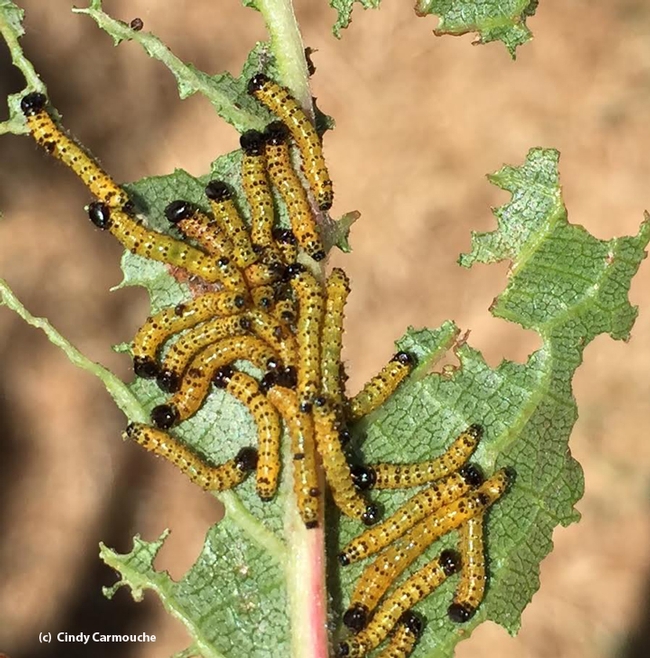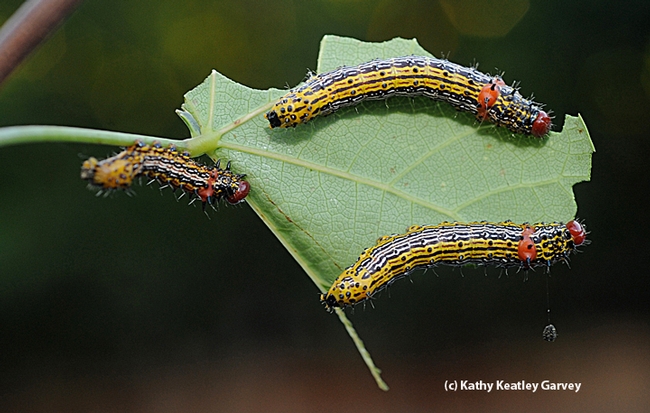What an amazing photo!
Vacaville resident Cindy Carmouche, a nurse at Kaiser Permanente, captured a photo of early instar redhumped caterpillars eating her French prune leaves.
One look at this photo and you will marvel at some v-e-r-y hungry caterpillars. Ravenous, in fact!
Lynn Kimsey, director of the Bohart Museum of Entomology, UC Davis, and professor of entomology, identified the caterpillars as Schizura concinna. "We always have people finding them outside Academic Surge (Crocker Lane, UC Davis campus) where they're feeding on the redbud and a variety of other things," she said.
Kimsey showed this photo to Professor David Wagner of Ecology and Evolutionary Biology, University of Connecticut, Storrs, Conn.
Professor Wagner described the image as "stunning given that these are first or second instars. Keep them coming—I am working on a guide to western caterpillars and need people in your part of California (desperately)." So if you see any redhumped caterpillars, he'd love to see them, too. (Email him at david.wagner
The UC Statewide Integrated Pest Management Program (UC IPM) provides some excellent information about this pest on its Pest Note website. The major reference: Dreistadt, S. H., J. K. Clark, and M. L. Flint. 2004. Pests of Landscape Trees and Shrubs: An Integrated Pest Management Guide, 2nd ed. Oakland: Univ. Calif. Agric. Nat. Res. Publ. 3359.
"The redhumped caterpillar, Schizura concinna, is found throughout much of California," the UC IPM authors wrote. "Although the climate of the coastal regions usually doesn't favor development of destructive populations, it can be a serious problem in the warm Central Valley. This pest most commonly attacks liquidambar (sweet gum), walnut, and plum trees, but you also can find them on almond, apple, apricot, birch, cherry, cottonwood, pear, prune, redbud, willow, and others, especially where insecticides applied to control other pests have killed their natural enemies.
"The redhumped caterpillar has four stages of development—egg, larva (caterpillar), pupa, and adult (moth)," they pointed out. "Adults lay eggs, which are nearly spherical and pearly white to cream colored, in groups of 25 to 100 on the undersides of younger leaves.
"Caterpillars are 1 to 1-1/2 inches long when fully grown and have a base color of yellow. Longitudinal white, reddish brown, or sometimes black stripes mark the body. The head is usually orange or brick red, as is the fourth body segment, which is distinctly humped and has two prominent, black tubercles (spines). Each body segment also has less distinctive black tubercles. Caterpillars rest with their hind end elevated."
You can read more about redhumped caterpillars on the UC IPM site--and how to control them.
Back in 2010, we spotted several redhumped caterpillars eating the leaves of our newly planted redbud tree. We let them eat their fill. However, they weren't nearly as abundant--or ravenous!--as the caterpillars on Cindy Carmouche's French prune!
Attached Images:

